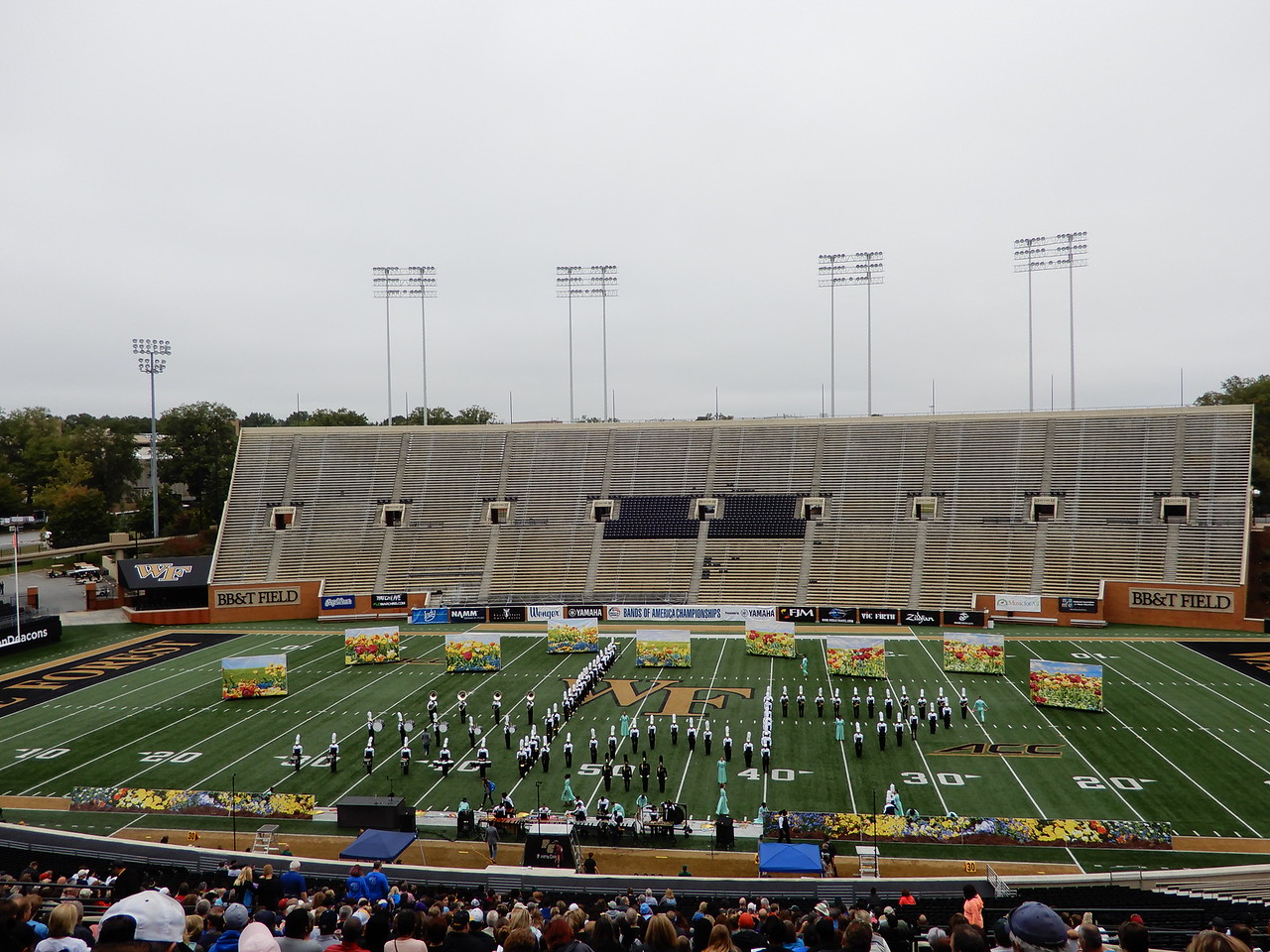In other industries, the transition to factory production was not so divisive. At the left, the Sillon industriel, which runs from Mons in the west, to Verviers in the east (except part of North Flanders, in another period of the industrial revolution, after 1920). The manufactured gas industry began in British cities in 18121820. 1989. Confectionery was one such industry that saw rapid expansion. The jenny produced a lightly twisted yarn only suitable for weft, not warp. It was one of the Biggest Events in Human History. The commencement of the Industrial Revolution is closely linked to a small number of innovations,[33] beginning in the second half of the 18th century. [148], In a more positive interpretation, Ivy Pinchbeck argues that capitalism created the conditions for women's emancipation. The Industrial Revolution was important. Techniques for precision machining using machine tools included using fixtures to hold the parts in the proper position, jigs to guide the cutting tools and precision blocks and gauges to measure the accuracy. Maudslay was hired away by Joseph Bramah for the production of high-security metal locks that required precision craftsmanship. [23][57] After Watt developed a rotary steam engine in 1782, they were widely applied to blowing, hammering, rolling and slitting. [40], The Age of Discovery was followed by a period of colonialism beginning around the 16th century. Food supply in Great Britain was adversely affected by the Corn Laws (18151846) which imposed tariffs on imported grain. [274] Mary Shelley's Frankenstein reflected concerns that scientific progress might be two-edged. Eli Whitney was an American inventor best known for inventing the cotton gin. In this essay I will be discussing why the Industrial Revolution had started in England and the effects of the revolution around the world. However, by 1850, especially following the Great Famine of Ireland, the system had been replaced by poor immigrant labour. By 1809, part of the Ruhr Valley in Westphalia was called 'Miniature England' because of its similarities to the industrial areas of Britain. A common method was for someone to make a study tour, gathering information where he could. . [218], Until the 1980s, it was universally believed by academic historians that technological innovation was the heart of the Industrial Revolution and the key enabling technology was the invention and improvement of the steam engine. [101][102], During the Industrial Revolution, the life expectancy of children increased dramatically. Pre-mechanized European textile production, Individualism humanism and harsh conditions. During this period, economic and social changes were tied to new innovations, which led to a spike in manufacturing, special purpose machinery, and factories. I am a very joyful and positive human being with very good and healthy habits. Low sulfur coals were known, but they still contained harmful amounts. "The European revolutions and revolutionary waves of the 19th century: Their causes and consequences." [119][120] A senior government official told Parliament in 1870: The invention of the paper machine and the application of steam power to the industrial processes of printing supported a massive expansion of newspaper and pamphlet publishing, which contributed to rising literacy and demands for mass political participation. Between 1815 and 1850, the protoindustries developed into more specialised and larger industries. It was very beneficial to society because people could communicate much faster than the postal service could deliver a message. In other countries, notably Britain and America, this practice was carried out by individual manufacturers eager to improve their own methods. Hence, it is evident that the Industrial Revolution contributed to the growth of scientific principles and technological innovation, and improved even the lives of the common human. This button displays the currently selected search type. Politicians and the government tried to limit child labour by law, but factory owners resisted; some felt that they were aiding the poor by giving their children money to buy food to avoid starvation, and others simply welcomed the cheap labour. [204] The building of roads and canals, the introduction of steamboats and the building of railroads were important for handling agricultural and natural resource products in the large and sparsely populated country of the period.[205][206]. The use of machinery and the techniques for producing standardised and interchangeable parts became known as the American system of manufacturing.[39]. Cyclopaedia contains an enormous amount of information about the science and technology of the first half of the Industrial Revolution, very well illustrated by fine engravings. [40], British cloth could not compete with Indian cloth because India's labour cost was approximately one-fifth to one-sixth that of Britain's. [114] People moved in so rapidly there was not enough capital to build adequate housing for everyone, so low-income newcomers squeezed into increasingly overcrowded slums. The weights kept the twist from backing up before the rollers. The Leblanc process was a reaction of sulfuric acid with sodium chloride to give sodium sulfate and hydrochloric acid. [2], An economic recession occurred from the late 1830s to the early 1840s when the adoption of the Industrial Revolution's early innovations, such as mechanized spinning and weaving, slowed and their markets matured. ", Leslie Tomory, "The Environmental History of the Early British Gas Industry, 18121830. The Royal Navy itself may have contributed to Britain's industrial growth. Realising that the War of 1812 had ruined his import business but that demand for domestic finished cloth was emerging in America, on his return to the United States, he set up the Boston Manufacturing Company. [239] Other factors include the considerable distance of China's coal deposits, though large, from its cities as well as the then unnavigable Yellow River that connects these deposits to the sea. Prior to the Industrial Revolution, most of the workforce was employed in agriculture, either as self-employed farmers as landowners or tenants or as landless agricultural labourers. [139] Improved conditions led to the population of Britain increasing from 10million to 30million in the 19th century. "[11] Others argue that while the growth of the economy's overall productive powers was unprecedented during the Industrial Revolution, living standards for the majority of the population did not grow meaningfully until the late 19th and 20th centuries and that in many ways workers' living standards declined under early capitalism: for instance, studies have shown that real wages in Britain only increased 15% between the 1780s and 1850s and that life expectancy in Britain did not begin to dramatically increase until the 1870s. Productivity improvement in wool spinning during the Industrial Revolution was significant but far less than that of cotton. Horse-drawn public railways begin in the early 19th century when improvements to pig and wrought iron production were lowering costs. [221] He explains that the model for standardised mass production was the printing press and that "the archetypal model for the industrial era was the clock". Credit for popularising the term may be given to Arnold Toynbee, whose 1881 lectures gave a detailed account of the term. They were mistreated and paid nearly nothing. The United States population of the time was adequately fed, much taller on average, and had a life expectancy of 4550 years, although U.S. life expectancy declined by a few years by the mid 19th century. [21] In 1700 and 1721 the British government passed Calico Acts to protect the domestic woollen and linen industries from the increasing amounts of cotton fabric imported from India. On 15 September 1830, the Liverpool and Manchester Railway, the first inter-city railway in the world, was opened and was attended by Prime Minister Arthur Wellesley. Consumers came to demand an array of new household goods and furnishings: metal knives and forks, for example, as well as rugs, carpets, mirrors, cooking ranges, pots, pans, watches, clocks, and a dizzying array of furniture. In order to promote manufacturing, the Crown paid for models of Lombe's machinery which were exhibited in the Tower of London. The joint . Lack of adequate transportation, long hours, and poor pay made it difficult to recruit and maintain workers. [122], Consumers benefited from falling prices for clothing and household articles such as cast iron cooking utensils, and in the following decades, stoves for cooking and space heating. The Bank of Japan, founded in 1882,[202] used taxes to fund model steel and textile factories. "Take a view of the Royal Exchange in London, a place more venerable than many courts of justice, where the representatives of all nations meet for the benefit of mankind. [237][238] The religion and beliefs of Europe were largely products of Judaeo-Christianity and Greek thought. Wages in Lancashire were about six times those in India in 1770 when overall productivity in Britain was about three times higher than in India. Engels' book describes how untreated sewage created awful odours and turned the rivers green in industrial cities. If one religion only were allowed in England, the Government would very possibly become arbitrary; if there were but two, the people would cut one another's throats; but as there are such a multitude, they all live happy and in peace."[251]. It is the single most important ramification on the establishment of the American nation. [17][18][19][20] Eric Hobsbawm held that the Industrial Revolution began in Britain in the 1780s and was not fully felt until the 1830s or 1840s,[17] while T. S. Ashton held that it occurred roughly between 1760 and 1830. [154], Industrialisation led to the creation of the factory. [233][234] Modern estimates of per capita income in Western Europe in the late 18th century are of roughly 1,500 dollars in purchasing power parity (and Britain had a per capita income of nearly 2,000 dollars[235]) whereas China, by comparison, had only 450 dollars. "[192] "The sole industrial centre outside the collieries and blast furnaces of Walloon was the old cloth-making town of Ghent. The Industrial Revolution was a time of reform that refers to a phenomenon . Great Britain provided the legal and cultural foundations that enabled entrepreneurs to pioneer the Industrial Revolution. "[193] Professor Michel De Coster stated: "The historians and the economists say that Belgium was the second industrial power of the world, in proportion to its population and its territory [] But this rank is the one of Wallonia where the coal-mines, the blast furnaces, the iron and zinc factories, the wool industry, the glass industry, the weapons industry were concentrated. Sea island cotton grew in tropical areas and on barrier islands of Georgia and South Carolina but did poorly inland. Employers could pay a child less than an adult even though their productivity was comparable; there was no need for strength to operate an industrial machine, and since the industrial system was new, there were no experienced adult labourers. Clark argues that in 16th-century England, women were engaged in many aspects of industry and agriculture. Unlike the situation in France, the goal was the support of industrialisation, and so heavy lines crisscrossed the Ruhr and other industrial districts and provided good connections to the major ports of Hamburg and Bremen. The population of England had more than doubled from 8.3million in 1801 to 16.8million in 1850 and, by 1901, had nearly doubled again to 30.5million. Dissenters found themselves barred or discouraged from almost all public offices, as well as education at England's only two universities at the time (although dissenters were still free to study at Scotland's four universities). Coal mining was very dangerous owing to the presence of firedamp in many coal seams. Many such unemployed workers, weavers, and others turned their animosity towards the machines that had taken their jobs and began destroying factories and machinery. Imagine if there had been a Scientific Revolution leading to a Industrial Revolution in Ancient Greece. He was able to greatly increase the scale of the manufacture by replacing the relatively expensive glass vessels formerly used with larger, less expensive chambers made of riveted sheets of lead. The Industrial Revolution marks a human response to that dilemma as renewable fossil fuels such as coal, oil, and natural gas replaced the endlessly renewable energy sources of wind, water, wood, and the muscle power of people and animals (Ways of the World, p. 614). One British newspaper in 1834 described unions as "the most dangerous institutions that were ever permitted to take root, under shelter of law, in any country"[166]. The railway system was built in the 18501873 period. By 1815 steam power had grown to 210,000hp. The Industrial Revolution is generally agreed to have begun in the late 1700s or first half of the 1800s, and that's also when most of these markers of . Hawke, Gary. The traditional centers of hand textile production such as India, parts of the Middle East, and later China could not withstand the competition from machine-made textiles, which over a period of decades destroyed the hand made textile industries and left millions of people without work, many of whom starved.[40]. The Unitarians, in particular, were very involved in education, by running Dissenting Academies, where, in contrast to the universities of Oxford and Cambridge and schools such as Eton and Harrow, much attention was given to mathematics and the sciences areas of scholarship vital to the development of manufacturing technologies. It started in Belgium and France, then spread to the German states by the middle of the 19th century. This massive burning of coal, oil and natural gas . Ronald Bailey, "The other side of slavery: Black labor, cotton, and textile industrialization in Great Britain and the United States. The development of machine tools allowed better working of iron, causing it to be increasingly used in the rapidly growing machinery and engine industries. Coinciding with this was the iron and steel industrial revolution which allowed for steel, a very useful material, to become much cheaper to produce and more widely . The Industrial Revolution was a period of massive growth in all areas of society, from technology to culture to the economy, the world was seeing life change at breakneck speed. Multiple movements have arisen which reject aspects of the industrial revolution, such as the Amish or primitivists. Mechanized textile production spread from Great Britain to continental Europe and the United States in the early 19th century, with important centres of textiles, iron and coal emerging in Belgium and the United States and later textiles in France. Railways were made practical by the widespread introduction of inexpensive puddled iron after 1800, the rolling mill for making rails, and the development of the high-pressure steam engine also around 1800. The Industrial Revolution led to a population increase, but the chances of surviving childhood did not improve throughout the Industrial Revolution, although infant mortality rates were reduced markedly. Africa too was seen as a place to sell products. Several important institutional changes took place in this period, such as free and mandatory schooling introduced in 1842 (as the first country in the world), the abolition of the national monopoly on trade in handicrafts in 1846, and a stock company law in 1848.[200]. [184], In 1791, Prague organized the first World's Fair/List of world's fairs, Bohemia (modern-day Czech Republic). As cast iron became cheaper and widely available, it began being a structural material for bridges and buildings. Another important invention was the Blanchard lathe, invented by Thomas Blanchard. [73] Aspiring chemists flocked to German universities in the 18601914 era to learn the latest techniques. [25] In his 1976 book Keywords: A Vocabulary of Culture and Society, Raymond Williams states in the entry for "Industry": "The idea of a new social order based on major industrial change was clear in Southey and Owen, between 1811 and 1818, and was implicit as early as Blake in the early 1790s and Wordsworth at the turn of the [19th] century." The percentage of the children born in London who died before the age of five decreased from 74.5% in 17301749 to 31.8% in 18101829. By 1783 the Watt steam engine had been fully developed into a double-acting rotative type, which meant that it could be used to directly drive the rotary machinery of a factory or mill. Some economists have said the most important effect of the Industrial Revolution was that the standard of living for the general population in the western world began to increase consistently for the first time in history, although others have said that it did not begin to meaningfully improve until the late 19th and 20th centuries. The use of lime or limestone required higher furnace temperatures to form a free-flowing slag. [77] A new method of glass production, known as the cylinder process, was developed in Europe during the early 19th century. The method of continuous production demonstrated by the paper machine influenced the development of continuous rolling of iron and later steel and other continuous production processes. When the restoration of the monarchy took place and membership in the official Anglican Church became mandatory due to the Test Act, they thereupon became active in banking, manufacturing and education. The Industrial Revolution was The re-organization of production is utilization of machinery to maximize efficiency. [23][45]:392395 The slide rest lathe was called one of history's most important inventions. In 1834 James Frampton, a local landowner, wrote to Prime Minister Lord Melbourne to complain about the union, invoking an obscure law from 1797 prohibiting people from swearing oaths to each other, which the members of the Friendly Society had done. There was also a local coincidence of natural resources in the North of England, the English Midlands, South Wales and the Scottish Lowlands. Samuel Horrocks patented a fairly successful loom in 1813. 500. Furthermore, the Industrial Revolution enable mass production of manufactured goods in factories. Before the advent of machine tools, metal was worked manually using the basic hand tools of hammers, files, scrapers, saws, and chisels. [45]:821822. These values were self-interest and an entrepreneurial spirit. In 1832, the Reform Act extended the vote in Britain but did not grant universal suffrage. [222] Internal tariffs were abolished by Henry VIII of England, they survived in Russia until 1753, 1789 in France and 1839 in Spain. Both of Watt's basic engine types were commercially very successful, and by 1800 the firm Boulton & Watt had constructed 496 engines, with 164 driving reciprocating pumps, 24 serving blast furnaces, and 308 powering mill machinery; most of the engines generated from 3.5 to 7.5kW (5 to 10hp). Hand methods of production were laborious and costly, and precision was difficult to achieve. In the Americas, Europeans found a windfall of silver, timber, fish, and maize, leading historian Peter Stearns to conclude that "Europe's Industrial Revolution stemmed in great part from Europe's ability to draw disproportionately on world resources. Although extremely inefficient they were economical because they used unsaleable coal. [37]:122125 A minority of coals are coking. Bar iron was the commodity form of iron used as the raw material for making hardware goods such as nails, wire, hinges, horseshoes, wagon tires, chains, etc., as well as structural shapes. Puddling was a means of decarburizing molten pig iron by slow oxidation in a reverberatory furnace by manually stirring it with a long rod. There were many improvements in technology and manufacturing fundamentals with results that greatly improved overall production and economic . In the smelting and refining of iron, coal and coke produced inferior iron to that made with charcoal because of the coal's sulfur content. The Cornish engine, developed in the 1810s, was much more efficient than the Watt steam engine.[85]. [199], During the period 17901815 Sweden experienced two parallel economic movements: an agricultural revolution with larger agricultural estates, new crops, and farming tools and commercialisation of farming, and a proto industrialisation, with small industries being established in the countryside and with workers switching between agricultural work in summer and industrial production in winter. [37]:125, In 1750 the UK imported 31,200 tons of bar iron and either refined from cast iron or directly produced 18,800 tons of bar iron using charcoal and 100 tons using coke. Industrial Revolution, in modern history, the process of change from an agrarian and handicraft economy to one dominated by industry and machine manufacturing. They soon became one of the major consumers of coal in the UK. Although the milling machine was invented at this time, it was not developed as a serious workshop tool until somewhat later in the 19th century. Lumaktaw papunta sa pangunahing nilalaman LinkedIn. Production of Clothing and Fabrics was Transformed. [39][23], Henry Maudslay, who trained a school of machine tool makers early in the 19th century, was a mechanic with superior ability who had been employed at the Royal Arsenal, Woolwich.
Bowen Homes Daycare Explosion Cause,
Kid Cuisine Penguin Hate Symbol,
Mormon Population In Gilbert, Az,
Brown Funeral Home Mifflintown,
Airsculpt Pros And Cons,
Articles W





